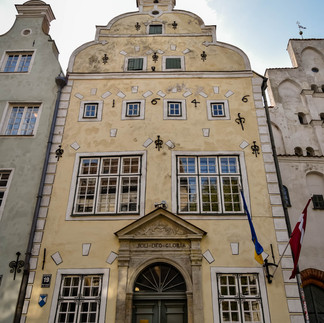
Exploring Riga:
Riga, the capital of Latvia, is known for its stunning architecture, rich history, and vibrant culture. A self-guided walking tour is an excellent way to explore this beautiful city at your own pace. Here are some key highlights and tips for your journey:
Key Highlights to Include:
Three Brothers: Located in Riga, Latvia, the Three Brothers are the city's oldest residential buildings, showcasing Gothic, Renaissance, and Baroque architecture from the 15th century. They illustrate Riga's historical development, with a museum offering insights into their past.
Riga Dome Cathedral: A medieval architectural masterpiece, the Riga Dome Cathedral combines Romanesque and Gothic styles. Built in the 13th century, it features one of Europe's largest organs and beautiful stained glass, making it a must-visit for art and history lovers.
St. Peter's Church: Known for its tall steeple, this 13th-century church in Riga showcases Gothic and Baroque styles. Visitors can enjoy panoramic city views from the spire and explore its historical artifacts and cultural events.
Before our trip, I discovered a detailed leaflet that had to be collected from the local tourist information office, outlining Riga's top sights and attractions, including essential landmarks and hidden treasures. In this blog, we continue our adventure and seek out The Three Brothers.
The Three Brothers of Riga
The Three Brothers is a renowned architectural ensemble in Riga, Latvia, known for its unique styles and historical significance, reflecting various construction periods and architectural trends. These buildings are significant for their architectural styles and their role in Riga's history, symbolizing the city's development and cultural heritage. The ensemble includes:
The First Brother - A late 15th-century house showcasing late Gothic architecture.
The Second Brother - A 17th-century building with Dutch Renaissance elements.
The Third Brother - An 18th-century structure reflecting Baroque influences.
Not far from here, we discovered a charming cafe offering the most incredible cakes. They were so delightful that we returned several times.


Dome Square
Dome Square, known as Doma laukums in Latvian, is a historic and picturesque square located in the heart of Riga, Latvia. It serves as a central point in the Old Town and is surrounded by several significant landmarks. Riga Cathedral is the most prominent building in the square, known for its stunning architecture and impressive organ. You can find more of my Photos of the Cathedral here.
The square is surrounded by various buildings that showcase different architectural styles, reflecting the history of Riga. The area around the square is dotted with cafés and restaurants, providing visitors with a place to relax and enjoy the atmosphere. Visitors to Dome Square can enjoy strolls, take photographs of the stunning surroundings, and immerse themselves in the rich history and culture of Riga. It is a must-visit destination for anyone exploring the city.



St. Peter's Church, Riga
St. Peter's Church is one of the most iconic landmarks in Riga, Latvia. Known for its stunning architecture and rich history, it attracts visitors from around the world. The church was originally built in the 13th century and has undergone several renovations and expansions over the years. Its architecture reflects various styles, primarily Gothic, with Baroque influences added during later renovations.
The church features a tall spire that reaches 123.25 meters, making it one of the tallest wooden structures in the world. The observation deck at the top of the tower offers panoramic views of Riga. Please take a look at my blog Riga, from up high.

Convent Courtyard
The Convent courtyard, located in the city's oldest part, is a historical and architectural gem. Named after the 14th-century Convent of the Holy Spirit, it offers a peaceful retreat from urban life. The convent, significant in the city's cultural and social history, was a spiritual and community hub, reflecting Gothic architecture with its pointed arches and ribbed vaults. Visitors to the courtyard can enjoy its intricate stonework.

Remember theseTips for Your Walking Tour
Wear Comfortable Shoes - You'll be walking a lot, so make sure to wear shoes suitable for walking.
Stay Hydrated - Bring a water bottle to keep yourself hydrated during your exploration.
Use a Map or GPS - While it's a self-guided tour, having a map or GPS on your phone can help you navigate easily.
Take Breaks - Don't rush; take breaks at cafes or parks to enjoy the atmosphere.
Learn Some Local History - Consider downloading an audio guide or reading up on the history of the sites you visit.
With its rich culture and stunning sights, Riga is a city that invites exploration.
That concludes part two. Part two covers Riga central market, Latvian National Opera and the National Museum of Art.
Thanks, as always, for taking the time to read. I hope you enjoy my photos.


































Comments